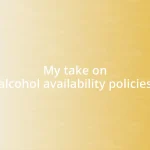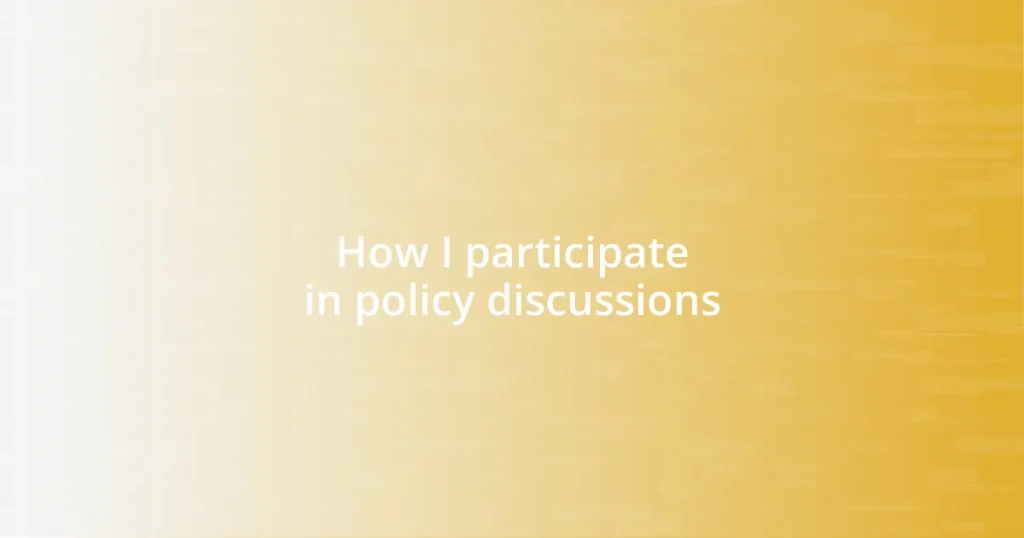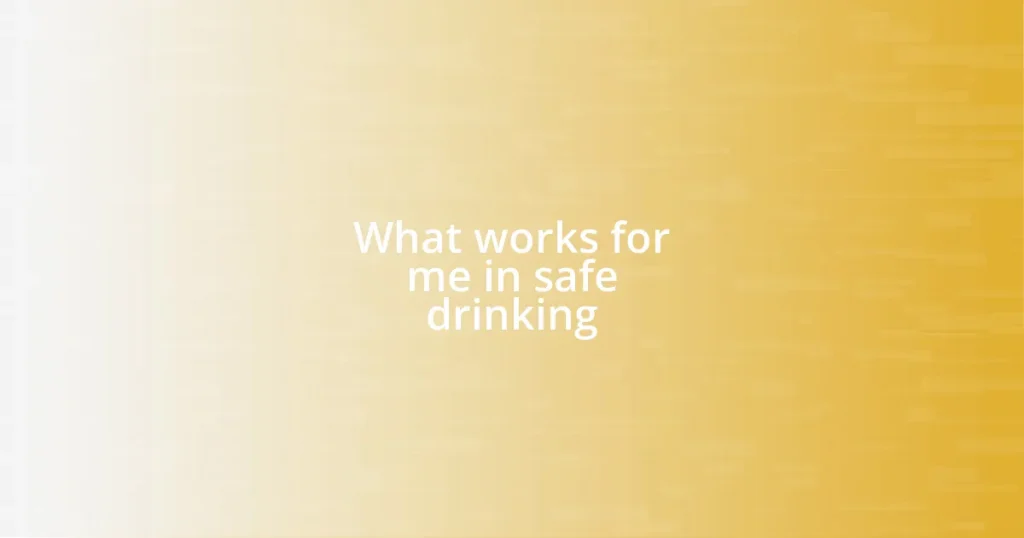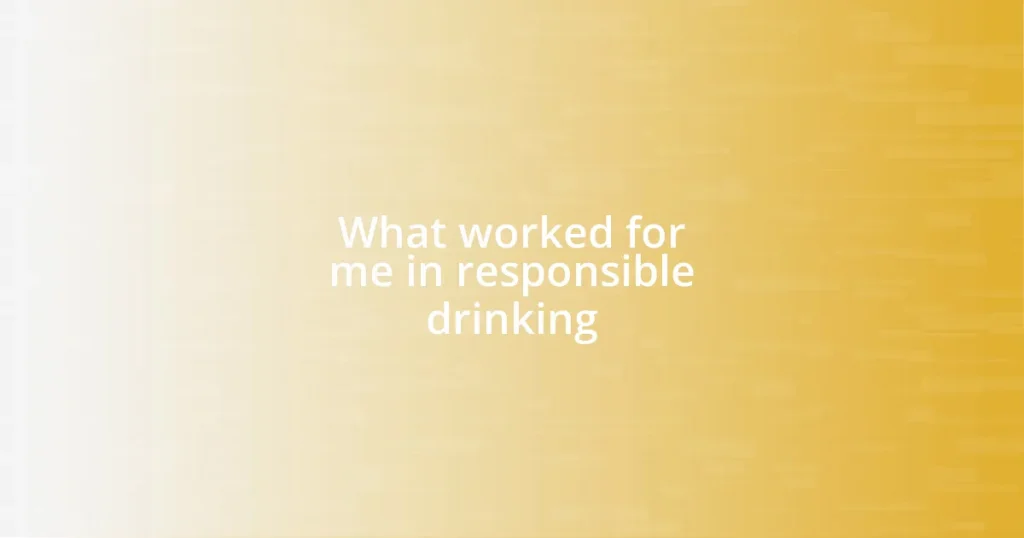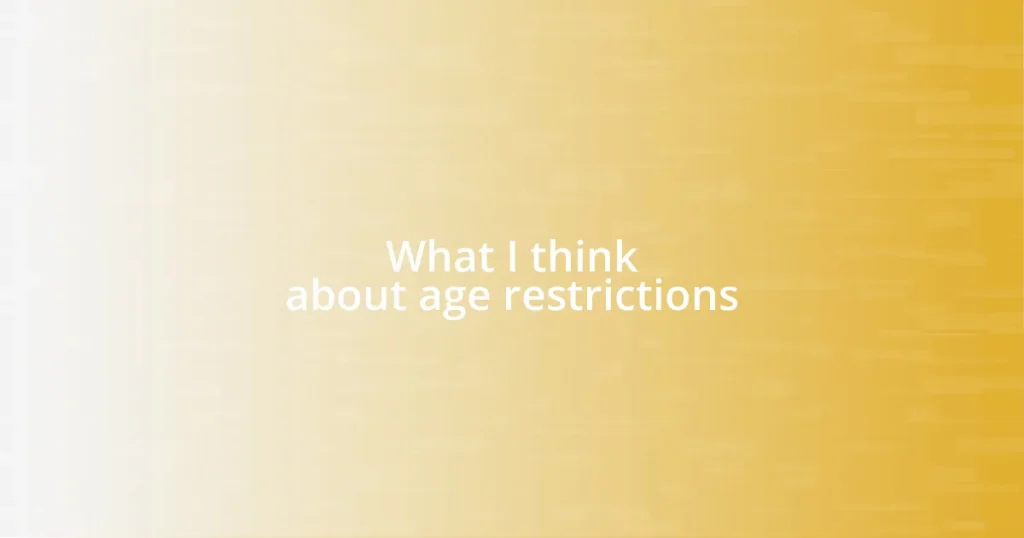Key takeaways:
- Active listening and clarity in communication enhance understanding and collaboration in policy discussions.
- Identifying and engaging diverse stakeholders creates richer dialogues and drives meaningful change.
- Preparation, including research and networking, boosts confidence and effectiveness in discussions.
- Following up after discussions strengthens relationships and maintains momentum towards action points.
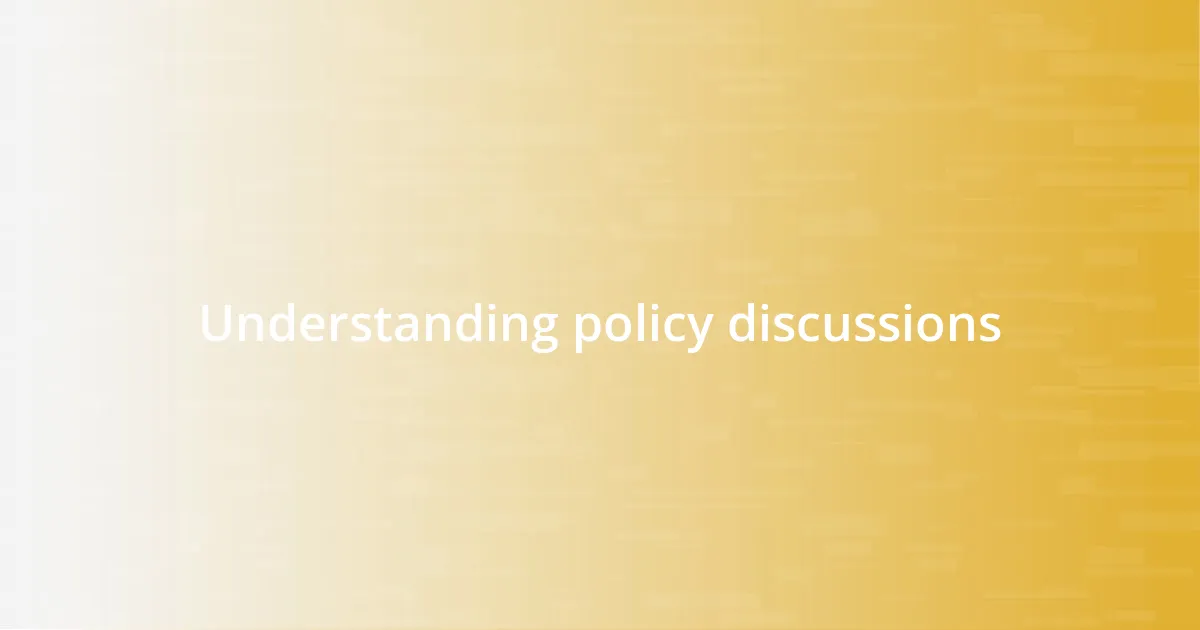
Understanding policy discussions
Policy discussions are often complex, involving multiple stakeholders with diverse perspectives. I remember my first time participating in such a discussion; the atmosphere was charged with passion, and I felt a mix of excitement and trepidation. How do we sift through varying opinions to identify common ground?
Listening is crucial in policy discussions. I once found myself in a heated debate over education reform, and it struck me how powerful it was to truly hear someone’s story. Their experiences reshaped my understanding and made me reconsider my stance. Isn’t it fascinating how personal narratives can bridge gaps that facts sometimes cannot?
I’ve often noticed that clarity is key in these discussions. Early in my experience, I struggled with jargon that left me feeling lost. But gradually, I learned to ask for explanations when terms were unclear, fostering a more inclusive dialogue. What if everyone felt empowered to seek clarity? Engaging openly can transform daunting conversations into collaborative efforts.
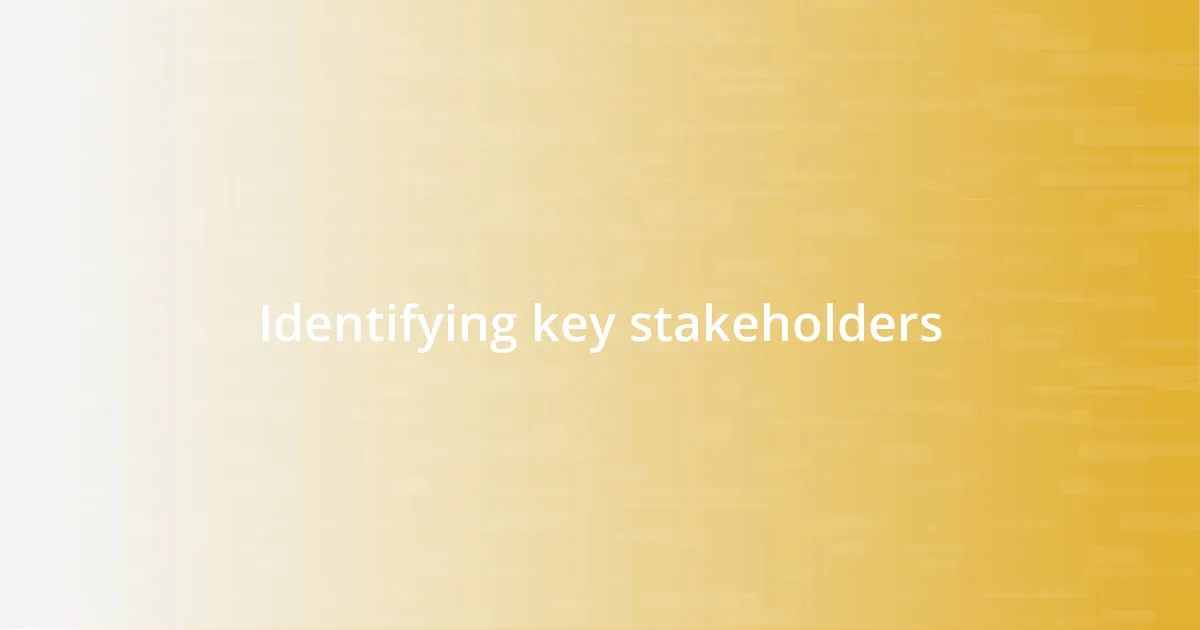
Identifying key stakeholders
Identifying key stakeholders can feel akin to piecing together a puzzle. In one of my earlier policy workshops, I vividly recall scanning the room and realizing that not everyone had a voice at the table. Recognizing who should be involved isn’t just about titles; it’s about understanding the people behind those roles. That realization emphasized the importance of documenting not just the ‘who,’ but also the ‘why’ of stakeholder involvement.
Here’s a quick rundown of what to look for when identifying stakeholders:
– Interest Influence: Who has a direct interest in the policy outcome?
– Diversity of Perspective: Are there differing viewpoints that need representation?
– Connection to the Issue: Who has relevant experience or expertise?
– Potential Impact: Who will be affected by the policy decisions?
– Willingness to Engage: Are they open to participating in discussions?
By mapping these factors, I find it’s much easier to ensure that all voices are heard, creating a richer dialogue that can drive meaningful change.
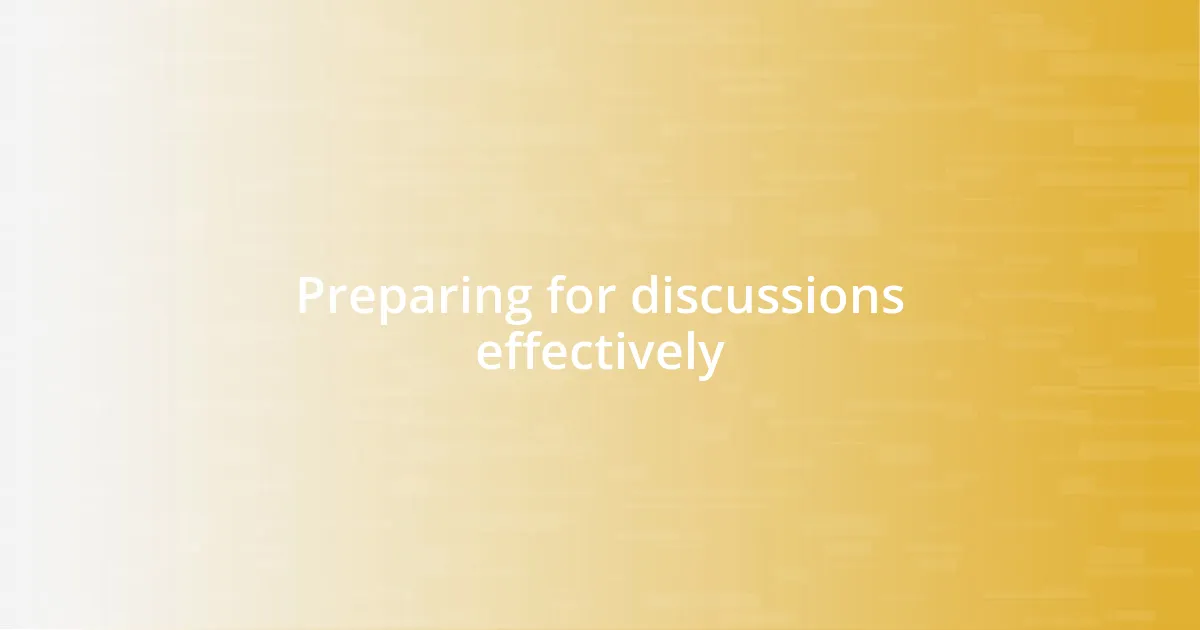
Preparing for discussions effectively
Preparation is the heartbeat of effective policy discussions. I often take time to reflect on the topic at hand, brainstorming potential questions that may arise and forming my own responses. For example, before a recent discussion on healthcare policy, I created a list of key points I wanted to address and questions I hoped to pose. It felt empowering to walk into the meeting with a clear focus, knowing I could contribute thoughtfully.
Researching the background of the issue also plays a vital role in my preparation. I recall preparing for a discussion on environmental policy, where I immersed myself in current regulations and opposing viewpoints. This deep dive not only equipped me with knowledge but also ignited my passion for the topic. It’s surprising how much more confidence I gained from being well-informed!
Engaging with others before the main discussion is another strategy I find beneficial. By chatting with fellow participants casually, I glean insights that might not surface during formal conversations. I remember networking at an event, where informal dialogue led me to discover shared interests with another participant. This connection enriched our later discussion, fostering a collaborative spirit that encouraged open dialogue.
| Preparation Strategy | Description |
|---|---|
| Reflection | Thinking about potential questions and responses to clarify my viewpoint. |
| Research | Diving deep into the background of the topic to enhance my knowledge and confidence. |
| Networking | Engaging with others informally to build rapport and gather diverse perspectives. |
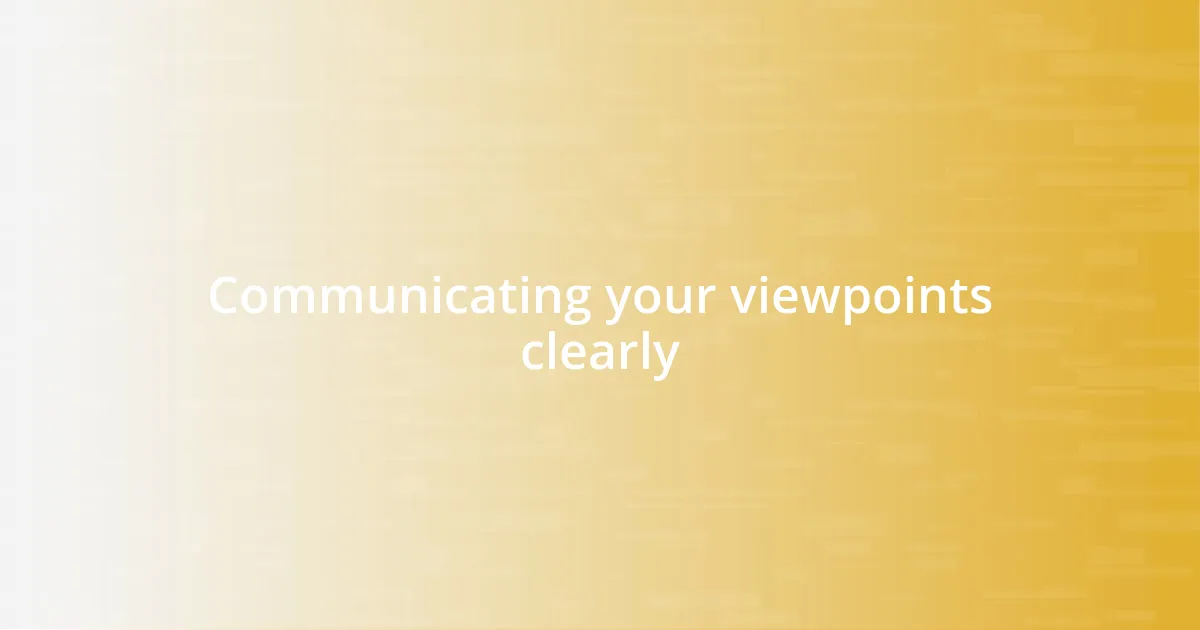
Communicating your viewpoints clearly
Communicating your viewpoints clearly is absolutely essential in policy discussions. I remember one particular meeting where a complex idea I had was met with foggy looks from my audience. It hit me that I hadn’t laid the groundwork properly. I shifted my approach, breaking down my main argument into simple, digestible pieces. This not only made my thoughts clearer but actually sparked genuine interest and engagement from others. Have you ever found yourself speaking eloquently only to be met with puzzled expressions? It’s a reminder that clarity is key.
I also find that using examples from real-life experiences can bridge the gap between idea and understanding. For instance, in a discussion about urban development, I illustrated my points by sharing a local project I volunteered for that transformed community spaces. When people can relate to your story, they’re more likely to connect with your message. Isn’t it fascinating how personal anecdotes bring statistics and policies to life, making them resonate on a human level?
Active listening, too, plays a crucial role in clear communication. During a recent dialogue about educational reform, I purposely paused to reflect on what others were saying before jumping in with my ideas. This not only showcased respect for their perspectives but also heightened my awareness of how my thoughts could better align with theirs. Isn’t it rewarding when a collaborative atmosphere emerges from thoughtful exchange? By focusing on clarity, relatability, and active engagement, we can truly elevate policy discussions to create meaningful impact.
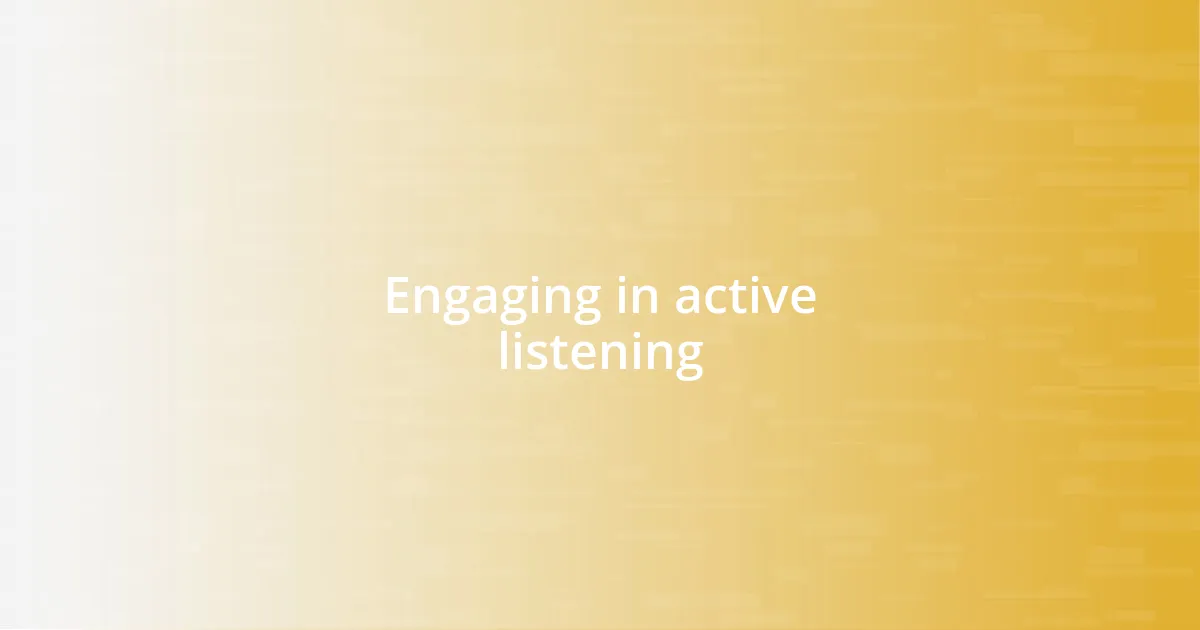
Engaging in active listening
Active listening is more than just hearing the words; it’s about truly understanding the message behind them. I can still recall a time during a policy discussion when a colleague voiced a concern that struck a chord with me. Instead of thinking about my response while they were speaking, I focused entirely on their words and emotions. This shift not only made them feel valued but also helped me grasp the nuances of their point of view, transforming the conversation into a collaborative exchange.
One technique I often use is summarizing what I’ve heard when someone finishes speaking. Just the other day, in a discussion on social welfare policies, I echoed back the essence of a naysayer’s argument. The act of paraphrasing their points fostered a sense of trust and invited others to build on that foundation. Have you ever felt more engaged when someone reflects your thoughts back to you? It’s fulfilling, isn’t it? This approach doesn’t just validate others but also deepens my comprehension of their stance, enriching the dialogue.
Emotion plays a significant role in active listening, too. There was a moment in a recent environmental forum when a passionate plea for action resonated with me deeply. I noticed my own heart racing in response to their urgency. This emotional connection compelled me to engage more thoughtfully and respond with empathy. Engaging in this manner not only enhances my contributions but also cultivates a supportive atmosphere where everyone feels comfortable putting forth their ideas. Isn’t it incredible how simply listening with intention can transform a discussion?
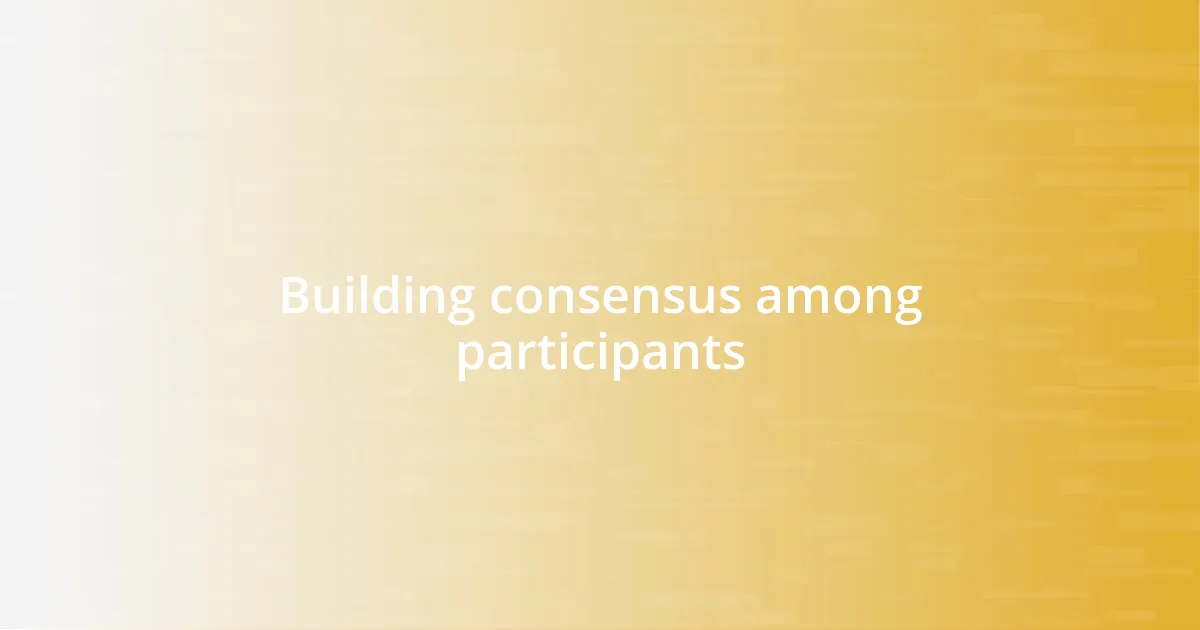
Building consensus among participants
Building consensus among participants is crucial in any policy discussion. I remember a heated debate once where various stakeholders, including community members and city officials, gathered to discuss zoning laws. Instead of letting emotions escalate, I suggested an open dialogue where everyone could voice their opinions without fear of judgment. It was remarkable to see how that initial invitation to share set a collaborative tone and made others feel more inclined to listen and engage.
In practice, I’ve found that creating smaller breakout groups fosters more intimate discussions. During a recent workshop on public health initiatives, I noticed that after splitting into smaller sections, participants became more animated. They shared personal stories related to health policies, revealing common ground that hadn’t been apparent in the larger group. Isn’t it fascinating how reducing the audience can amplify individual voices? By allowing participants to express their experiences, consensus naturally emerged, and the group co-created a more impactful strategy.
Another technique that has worked for me is framing the discussion around shared goals. During a policy forum on transportation, I pointed out our collective aim: improving accessibility for all residents. Shifting focus from individual agendas to a shared purpose helped dissolve tensions between opposing views. It felt rewarding to witness participants rallying around a common vision, don’t you think? Establishing a united front often leads to productive discussions and ultimately, more actionable policies.
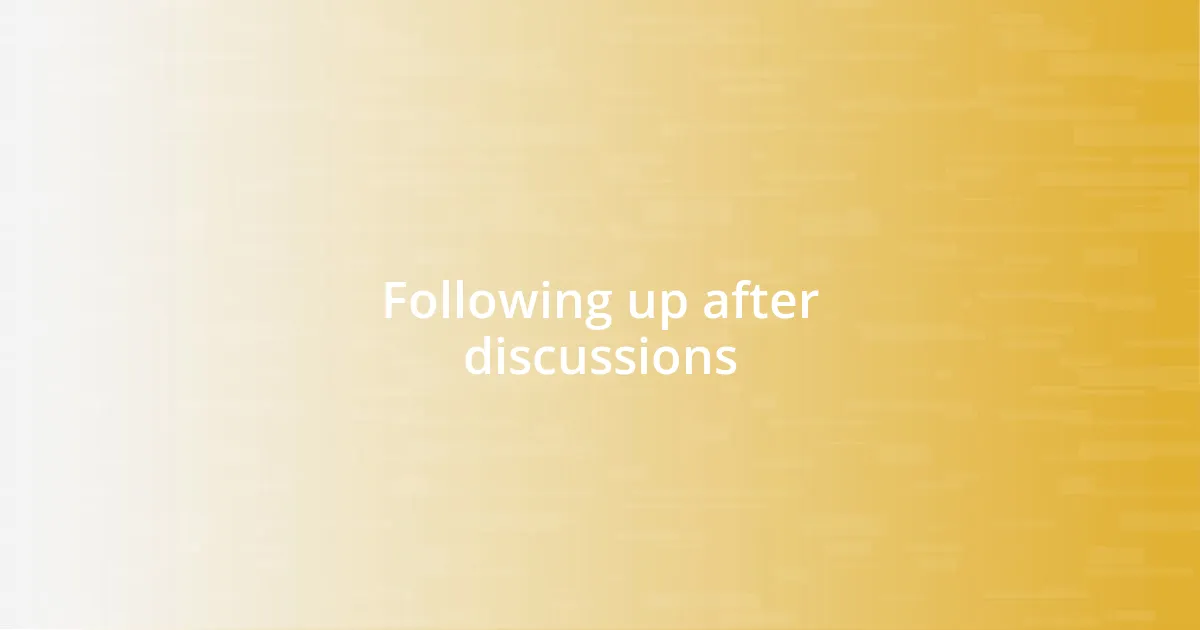
Following up after discussions
Following up after discussions is where the real magic often happens. I’ve learned that sending a simple thank-you email can make a significant impact. Once, after a particularly invigorating discussion about education reform, I took a moment to reach out to the participants, expressing my appreciation for their insights. Not only did that strengthen our connections, but it also encouraged an ongoing dialogue. Have you ever noticed how a small gesture can enhance collaborative relationships?
In my experience, the follow-up is also a chance to summarize key takeaways and action points. After a recent roundtable on climate policy, I crafted a recap that highlighted the various perspectives shared. This not only served as a reminder for everyone involved but also helped clarify the next steps we planned to tackle. I felt a sense of fulfillment knowing that this approach kept our momentum alive. Isn’t it empowering to see discussions evolve into tangible action?
I find that sharing resources related to our conversation can spark further interest and engagement. For example, after discussing poverty alleviation strategies, I sent links to relevant studies and case studies that deepened our understanding. In doing so, I noticed that it encouraged others to contribute their thoughts and insights. It’s fascinating how a well-placed resource can invigorate a topic – don’t you agree? Following up in meaningful ways not only solidifies what we’ve discussed but also paves the way for more dynamic interactions in the future.







